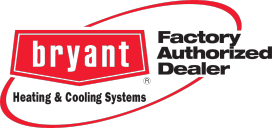Stale air, musty odors, and stubborn dust can signal trouble with your indoor air quality.
Daily life generates dust, dander, and pollutants that accumulate in your living space. These reduce comfort and may affect your well-being.
Air quality solutions target the root of these problems. If you’re sneezing more often, notice fogged windows, or smell lingering odors, it’s time to check your air quality.
This guide provides a clear action plan to improve your air, reduce allergens, and reclaim your home’s comfort.
What Is Indoor Air Quality and Why Does It Matter?

What Influences Indoor Air Quality?
Several factors affect indoor air quality. Some are obvious—like the dust, pollen, and pet dander that settle on surfaces and get stirred into the air. Others grow in hidden damp spots, like mold, which spreads spores easily.
But some of the most persistent pollutants are invisible gases. Volatile organic compounds (VOCs) are chemicals released from paint, cleaners, and new furniture. Smoke and cooking fumes add to the problem, along with other indoor pollutants.
While modern, tightly sealed buildings are energy efficient, they also trap pollutants inside, allowing them to build up to unhealthy levels.
Why Indoor Air Quality Matters for Health and Comfort
According to the U.S. Environmental Protection Agency (EPA), people spend about 90% of their time indoors, so the air inside your home has a direct impact on your health and comfort.
The consequences of poor air are direct and tangible. It can worsen allergies and asthma, and may trigger headaches, fatigue, or coughing. Over time, consistent exposure to indoor pollutants even raises the risk of more serious respiratory and heart problems.
These risks aren’t shared equally. Children, older adults, and those with pre-existing conditions like asthma or heart disease are especially vulnerable, making proactive air quality management essential for their well-being.The good news is that the benefits of clean air are just as real. Clean indoor air supports better sleep, clearer thinking, and lasting comfort. Improving air quality helps make your home healthier and safer for everyone who lives or visits there.
How to Identify Air Quality Issues in Your Space

Catching indoor air problems early keeps your home healthier and more comfortable. Some warning signs are obvious, but others are easy to miss.
Visual and Physical Signs
Look for mold on walls, ceilings, or window frames. A layer of dust on vents or surfaces often points to poor filtration. Condensation on windows, especially in cooler weather, signals humidity trouble.
Pay attention to how you feel indoors. If you or your family experience sneezing, itchy eyes, headaches, or worsening allergies, your air quality may need attention.
DIY Checks and Simple Tools
Use these simple checks to uncover less visible problems. Monitor humidity levels with a basic gauge — ideal indoor humidity stays between 30% and 50%.
Inspect and change HVAC filters regularly. Dirty filters let dust and allergens build up in your system.
Track when symptoms appear. If you feel better outside, indoor air could be the cause.
Using Indoor Air Quality Testing
When your own observations and simple tools aren’t enough to pinpoint the problem, it’s time to consider more advanced testing.
For more detailed insight, you can use an indoor air quality monitor. These devices continuously track pollutants like dust, VOCs, and carbon monoxide, giving you data you can analyze over time.
However, for problems that are hidden or complex, a professional inspection is the next logical step.
Specialized equipment can identify issues beyond the scope of home tools, such as pinpointing hidden mold colonies, quantifying specific allergen levels, or detecting leaks in your ductwork.
So, when should you make that call? If symptoms persist despite your efforts, you see visible mold that returns after cleaning, or you simply want a definitive assessment, contact a qualified expert.
Addressing these underlying problems quickly prevents more extensive repairs down the line and helps you reclaim a safe, comfortable living space.
Science-Backed Solutions to Improve Indoor Air Quality

Achieving clean, healthy air is a combination of consistent habits, the right tools, and a little routine maintenance. Small adjustments can noticeably improve air quality, especially when they target common pollution sources.
Filtration and Air Purification
Start with your HVAC filters—it’s the first line of defense against dust, pollen, and pet dander. Replace filters every one to three months, or more often if you have pets or allergies.
Add portable purifiers in bedrooms or shared spaces to target particles and odors more effectively. Choose units with true HEPA filters, which are proven to capture over 99.97% of particles as small as 0.3 microns.
Ventilation and Humidity Control
Fresh airflow makes rooms more comfortable and reduces stale odors. Open windows when the weather allows.
Run exhaust fans in kitchens and bathrooms to control moisture and clear out lingering smells.
Mechanical ventilation systems such as energy recovery ventilators exchange stale indoor air for fresh outdoor air. They’re especially effective in modern, tightly sealed homes. Aim for at least five clean air exchanges per hour to reduce airborne particles.
Keep humidity between 30% and 50% to prevent mold and dust mites. Use dehumidifiers in damp basements or humid seasons, and humidifiers when indoor air feels too dry in winter.
Maintenance and Cleaning Routines
A consistent cleaning routine makes a lasting impact. Vacuum with a HEPA-filtered machine and dust with damp cloths to avoid spreading particles.
Choose low-emission cleaning products and store paints or chemicals in sealed containers away from living areas.
Repair leaks and remove standing water quickly to prevent mold.
These steps work together to create a healthier indoor environment. Regular filter changes, good ventilation, balanced humidity, and source control all reduce pollutants.
With steady care, your air stays clean and your home comfortable throughout the year. If you need help choosing the best indoor air quality solutions, schedule an inspection—an air quality test can guide you to the right approach for your space.
Matching Solutions to Your Unique Needs
Each home has its own air quality challenges, which is why a one-size-fits-all approach rarely works. The key is to start by diagnosing your specific concerns—whether that’s allergies, visible mold, musty odors, or excess humidity. This focus helps you prioritize the most effective fixes.
Tailoring Your Approach
For many common issues, you can make significant improvements with straightforward adjustments. Tackle minor problems like routine dust and pollen by changing HVAC filters regularly, cleaning vents, and using portable air purifiers in key areas.
If you’re battling odors or humidity, run exhaust fans during and after cooking or showering, and use dehumidifiers or moisture absorbers in persistently damp areas like basements.
When to Seek Professional Help
Sometimes, DIY measures aren’t enough to solve the root cause. If mold returns, smells linger, or symptoms persist, schedule an air quality test.
Professionals can find hidden pollution sources and recommend targeted solutions for your home.
Consider whole-home purifiers or upgraded ventilation if standard fixes aren’t enough.
Track progress by noting symptoms, dust levels, and any recurring smells. A personalized plan and consistent follow-up keep your indoor air clean, comfortable, and safe.
The Benefits of Proactive Air Quality Management
Taking charge of your indoor air quality delivers rewards that extend far beyond just breathing easier. When you make air quality a priority, you’re investing in three key areas that impact your daily life and long-term wellbeing.
Health and Comfort: The Immediate Payoff
The most noticeable benefits come in how you feel each day. Cleaner air directly eases allergies and asthma symptoms, leading to more restful sleep and increased energy.
Many people report waking up without that familiar stuffy-head feeling, enjoying greater comfort and mental clarity throughout their home.
Safeguarding Your Investment
Beyond personal wellness, proactive air quality management protects your physical property.
By controlling humidity and filtering out corrosive particles, you prevent mold growth, moisture damage, and excessive wear on your HVAC system.
This preventive care preserves your home’s condition and helps maintain its long-term value.
The Cumulative Advantage of Consistency
These healthy habits also lead to tangible financial benefits. Making air quality part of your regular upkeep supports comfort while delivering long-term savings. This consistent approach means fewer disruptions, reduced health complaints, and a fresher living environment year-round.
Over time, these habits transform your space into a genuinely healthier, more comfortable place to live.
For Expert, Local Indoor Air Quality Solutions That Last
Rod Miller HVAC delivers dependable indoor air quality solutions for Maryland homes and businesses. Our team provides clear assessments, transparent pricing, and guidance shaped by decades of experience.
We offer maintenance plans with scheduled inspections and priority service. This proactive care keeps your air clean and your system running smoothly.
Our diagnostics detect problems early, and we explain every option in plain terms. We value education and share practical tips to help you stay informed about your system.
For cleaner air and year-round comfort, contact us for personalized advice or an indoor air quality test. Schedule service today with a local team you can trust.
Frequently Asked Questions About Indoor Air Quality Solutions
What are the main causes of poor indoor air quality?
Common culprits include dust, pet dander, mold, and chemical fumes from paints or cleaners. Limited ventilation lets these pollutants build up indoors. If you notice musty smells, visible mold, or worsening allergies, your air quality might need attention.
What are effective indoor air quality solutions?
Start with the basics: high-efficiency air filters, portable purifiers, and dehumidifiers. Improving ventilation helps clear out dust, mold, and odors. For an easy boost, run kitchen and bathroom exhaust fans more often.
What health symptoms should I look for?
Watch for coughing, sneezing, headaches, or fatigue that get worse indoors and ease up when you go outside. These are common signs your air might be affecting your health.
How do I choose the best solution for my home?
Think about your biggest concern—whether that’s allergies, humidity, or odors. Then match your solution to the problem. For example, use HEPA filters for allergies, a dehumidifier for dampness, and an air purifier for lingering smells. If you’re not sure what’s causing issues, start with an indoor air quality test—simple monitors can reveal a lot.
What can I do myself, and when should I call an expert?
You can change HVAC filters, clean regularly, and keep air flowing with exhaust fans. But if mold keeps coming back, odors linger, or symptoms don’t improve, it’s time to call a professional for a full inspection.


